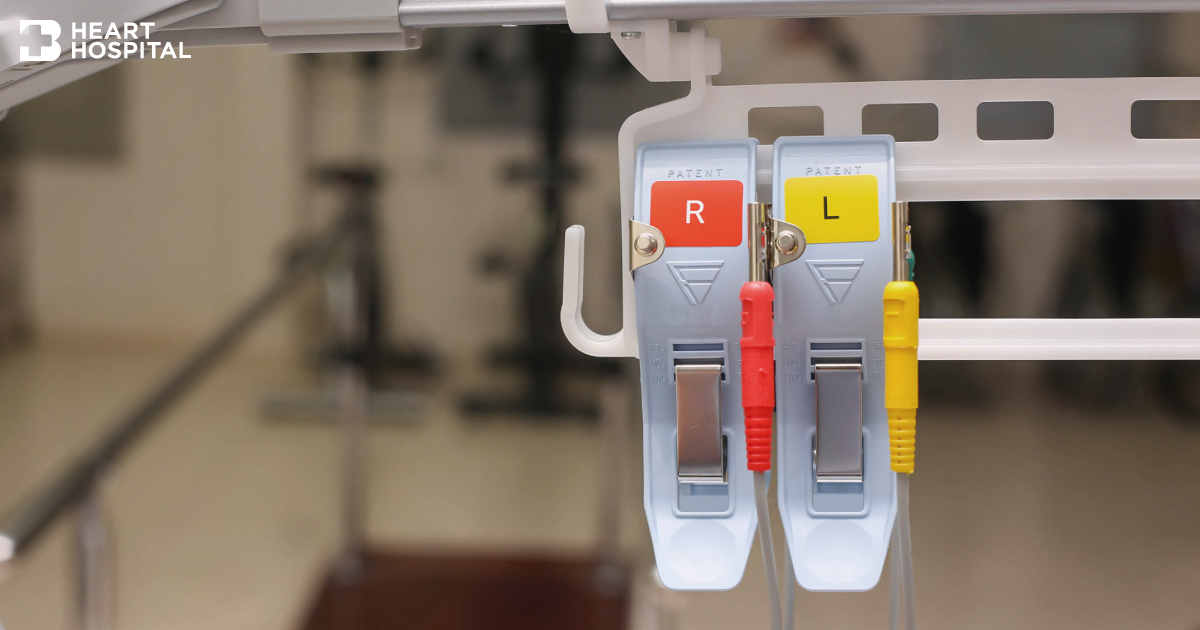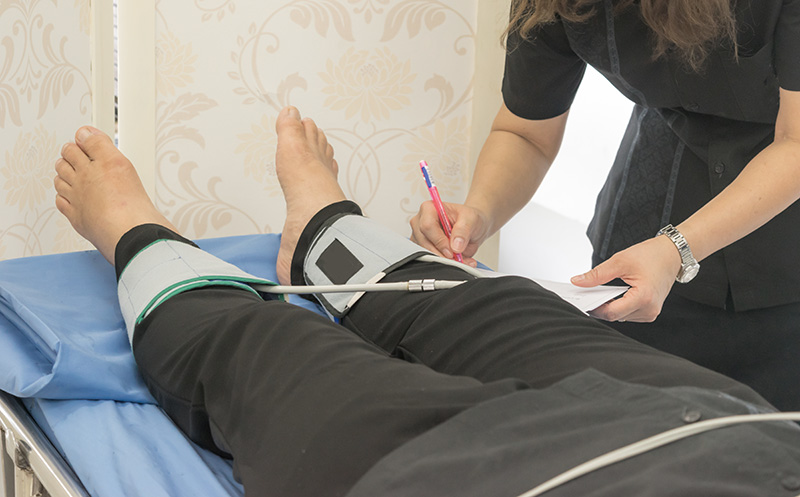Ankle-Brachial Index (ABI)

diagnosis
table of contents
What is Ankle-Brachial Index?
Risk factors of developing Peripheral Artery Disease (PAD)
Useful of Ankle-Brachial Index test
Efficacy of making the diagnosis of lower extremity PAD
Risk
Preparing for the test
During the test
Interpretation
Alternative studies
What is Ankle-Brachial Index?
The ankle-brachial index test is a quick, painless, noninvasive way to check for peripheral artery disease (PAD) of the lower extremities. Peripheral artery disease is a condition in which the arteries in the legs or arms are narrowed or blocked, mostly by atherosclerotic plaque, leading to inadequate blood supply to the effected part. They may cause symptoms of legs pain called claudication and may cause chronic ulcer of the legs or loss limb. People with peripheral artery disease has higher chance of having the same disease in other part of circulation and are at a high risk of heart attack or stroke. The ankle-brachial index test compares the blood pressure measured at the ankle (Ankle) with the blood pressure measured from the arm (Brachial).
Risk factors of developing Peripheral Artery Disease (PAD)
- Age over 50 years
- Being a current or former smoker
- Diabetes
- High blood pressure
- High cholesterol
- Overweight (a body mass index of 25 or greater)
Useful of Ankle-Brachial Index test
- Diagnosis of lower extremity arterial disease.
- Assess the severity of lower extremity arterial disease
- For prediction of future cardiovascular events
- Assess the result of treatment.
Efficacy of making the diagnosis of lower extremity PAD
- Test Sensitivity: 90%
- Test Specificity: 98%
Risk
There is no risk from this test, just like having blood pressure measurement.
Preparing for the test
No specific preparation is required for the test
During the test
Patient will be placed on supine horizontal position. There will be the standard blood pressure measurement from both arms and from arteries just distal to both ankles.
- Measure highest systolic reading in both arms
- Record first doppler sound as cuff is deflated
- Record at the radial pulse
- Use highest of the two arm pressures
- Measure systolic readings in both legs
- Cuff applied to calf, just above the malleoli
- Avoid applying over a distal bypass site (risk of bypass thrombosis)
- Use doppler Ultrasound device
- Record first doppler sound as cuff is deflated
- Record dorsalis pedis (DP) pressure (absent in 2-3% of normal patients)
- Record posterior tibial (PT) pressure
- Use highest ankle pressure (DP or PT) for each leg
- Calculate ratio of each ankle to brachial pressure
- Divide each ankle pressure by highest brachial pressure
Interpretation
- Ankle-Brachial Ratio >1.4: Non-compressable vessels (see false negatives below)
- Ankle-Brachial Ratio >0.90: Normal
- Ankle-Brachial Ratio <0.90: Peripheral Vascular Disease
- Ankle-Brachial Ratio <0.6: Intermittent Claudication
- Ankle-Brachial Ratio <0.5: Multi-level disease
- Ankle-Brachial Ratio <0.3: Limb Threatening Ischemia requires emergent interventio
- Ankle-Brachial Ratio <0.26: Resting ischemic pain
- Ankle-Brachial Ratio <0.2: Gangrenous extremity
Alternative studies
- Toe-brachial ratio (typically 0.7 to 0.8)
- Segmental Arterial Pressure
- Standard angiography
- CT angiography
- Magnetic resonance angiography


